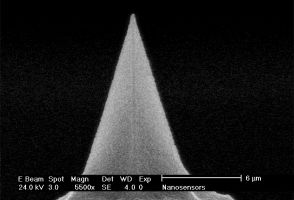Dengji Guo, Xinchun Chen, ChenhuiZ hang, Xiaoyu Wu, Zhiyuan Liu, Kunluo Li, Jun Zhang, Chenxue Wang
Nanoscale tunable reduction of interfacial friction on nano-patterned wear-resistant bulk metallic glass
Applied Surface Science, Volume 453, 30 September 2018, Pages 297-308
DOI: https://doi.org/10.1016/j.apsusc.2018.05.095
Rok Šibanc, Teja Kitak, Biljana Govedarica, Stanko Srčič, Rok Dreu
Physical properties of pharmaceutical pellets
Chemical Engineering Science, Volume 86, 4 February 2013, Pages 50-60
DOI: https://doi.org/10.1016/j.ces.2012.04.037
Biljana Govedarica, Miha Škarabot, Ilija Ilić, Odon Planinšek, Igor Muševič, StaneSrčič
Mapping the local elastic properties of pharmaceutical solids using atomic force microscopy
Procedia Engineering, Volume 10, 2011, Pages 2857-2866
DOI: https://doi.org/10.1016/j.proeng.2011.04.475
E. Vaganova, G. Leitus, I. Wachtel, I. Popov, N. Shimoni, D. Olea, J. Gomez-Herrero, S, Yitzchaik
Effect of Gold Adsorption on the Conductive Properties of Cyclo-octasulfur Microcrystals
Journal of Nanoscience and Nanotechnology, 2007, Volume 7, Number 12, pp. 4359-4364(6)
DOI: https://doi.org/10.1166/jnn.2007.868
Jiří Brus, Milena Špírková
NMR Spectroscopy and Atomic Force Microscopy Characterization of Hybrid Organic – Inorganic Coatings
Macromolecular Symposia, Volume 220, Issue 1, Special Issue: Spectroscopy of Partially Ordered Macromolecular Systems, January 2005, Pages 155-164
DOI: https://doi.org/10.1002/masy.200550212
Ewa Tocha, Holger Schönherr, G. Julius Vancso, Natasha Siebelt
Influence of Grain Size and Humidity on the Nanotribological Properties of Wear-Resistant Nanostructured ZrO2 Coatings: An Atomic Force Microscopy Study
Journal of the American Ceramic Society, Volume 88, Issue 9, September 2005, Pages 2498-2503
DOI: https://doi.org/10.1111/j.1551-2916.2005.00459.x








